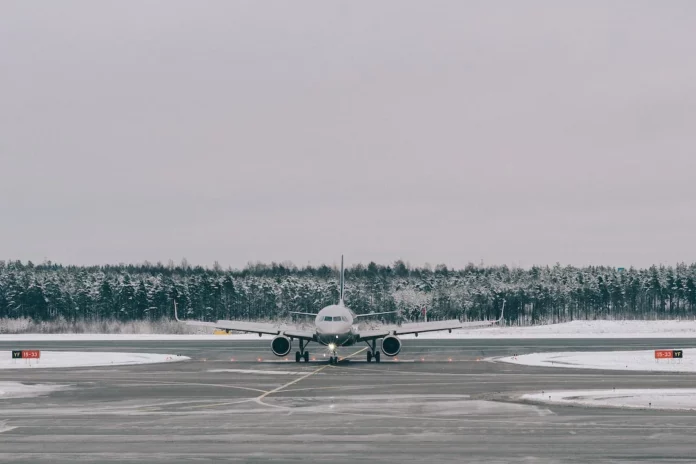The High Lift Control System (HLCS) on the Boeing 737 aircraft is a vital component that allows the aircraft to achieve optimal lift during takeoff and landing. It consists of various mechanisms and devices that work together to modify the shape and configuration of the wings and flaps, enabling the aircraft to generate the necessary lift for safe and efficient flight.
The HLCS plays a crucial role in the overall aerodynamic performance of the Boeing 737. It ensures that the aircraft can operate at different speeds and altitudes while maintaining stability and control. By adjusting the wing configuration, the HLCS enables the aircraft to achieve maximum lift during takeoff and landing, as well as reduces drag and improves fuel efficiency during cruise. This article will explore the components and functions of the HLCS in detail, shedding light on its importance in the operation of the Boeing 737.
Contents
The Components of the High Lift Control System (HLCS)
The HLCS consists of several key components that work together seamlessly to ensure optimum lift during critical phases of flight. These components include:
The Leading Edge Slats
One of the main components of the HLCS is the leading edge slats. These are movable surfaces located on the leading edge of the wings. During takeoff and landing, the leading edge slats extend outward, increasing the wing’s surface area and altering the airflow over the wings. This extension creates a high-pressure zone on the upper surface of the wings, resulting in increased lift and reduced stall speed. The leading edge slats play a critical role in maintaining lift and preventing stalling during low-speed maneuvers.
The Trailing Edge Flaps
In addition to the leading edge slats, the HLCS also includes trailing edge flaps. These flaps are located on the trailing edge of the wings and can be extended or retracted to alter the wing’s shape. During takeoff and landing, the trailing edge flaps extend downward, increasing the surface area of the wings and modifying the airflow. This extension improves lift and enhances the aircraft’s ability to maintain stability at lower speeds. The trailing edge flaps also contribute to drag reduction during cruise by reducing the wing’s camber, resulting in improved fuel efficiency.
The Wing Spoilers
Another important component of the HLCS is the wing spoilers. These are retractable panels located on the upper surface of the wings. During certain flight conditions, such as landing or in the event of an aborted takeoff, the spoilers quickly extend upwards. This deployment disrupts the airflow over the wings, reducing lift and creating drag. By reducing lift, the spoilers aid in rapidly decelerating the aircraft, allowing for shorter landing distances and effective braking. Furthermore, the spoilers also contribute to roll control during certain flight maneuvers, enhancing the aircraft’s overall stability.
The Functioning of the High Lift Control System (HLCS)
The HLCS works in conjunction with the aircraft’s flight control system to dynamically adjust the wing configuration based on the aircraft’s operating conditions. This adaptive mechanism allows the Boeing 737 to optimize its lift during various phases of flight.
During takeoff, the HLCS deploys the leading edge slats and trailing edge flaps to increase the wing’s surface area and generate more lift. This extended wing configuration enables the aircraft to achieve the necessary lift at lower speeds, allowing for safe and smooth takeoff operations. As the aircraft gains altitude and accelerates, the HLCS gradually retracts the leading edge slats and trailing edge flaps to reduce drag and improve fuel efficiency during the cruise phase.
In preparation for landing, the HLCS once again extends the leading edge slats and trailing edge flaps. This configuration ensures that the aircraft can generate enough lift at lower speeds, preventing stalling and allowing for a controlled descent. Upon touchdown, the wing spoilers quickly deploy, disrupting the airflow over the wings and reducing lift. This action aids in decelerating the aircraft and brings it to a stop within a shorter distance.
Overall, the HLCS is designed to enhance the aerodynamic performance and safety of the Boeing 737 aircraft. It allows for efficient takeoffs and landings by providing the necessary lift and control at low speeds. Furthermore, it contributes to the aircraft’s fuel efficiency during the cruise phase by reducing drag through the retraction of the leading edge slats and trailing edge flaps. The precise coordination of the HLCS components with the flight control system ensures the smooth and reliable operation of the Boeing 737.
Conclusion
The High Lift Control System (HLCS) on the Boeing 737 is a critical component that facilitates safe and efficient flight. By utilizing the leading edge slats, trailing edge flaps, and wing spoilers, the HLCS ensures that the aircraft can generate optimal lift during takeoff and landing, while also improving fuel efficiency during cruise. Its precise coordination with the flight control system allows for dynamic adjustments in wing configuration based on operating conditions. The HLCS plays a vital role in maximizing the aerodynamic performance of the Boeing 737, contributing to its overall safety, control, and efficiency.
For More: What is SHVR on Boeing 737? (Shaver)




